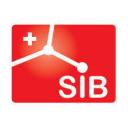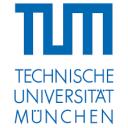
Add to my favorites
Remove from my favorites
Category: Protein informations, Protein sequences alignment
The mission of UniProt is to provide the scientific community with a comprehensive, high quality and freely accessible resource of protein sequence and functional information. The site provides UniProtKB (protein knowledgebase) consisting of Swiss-Prot and TrEMBL sections; UniRef that speeds up sequence similarities search; and UniParc a squence archive.
...continue to readExPASy is the Swiss Institute of Bioinformatics (SIB)Bioinformatics Resource Portal which provides access to scientific databases and software tools (i.e., resources) in different areas of life sciences including proteomics, genomics, phylogeny, systems biology, population genetics, transcriptomics etc. (see Categories in the left menu). On this portal you find resources from many different SIB groups as well as external institutions.
...continue to read
Add to my favorites
Remove from my favorites
expression and localization of proteins in human tissues
Category: Protein informations
The human protein atlas shows expression and localization of proteins in a large variety of normal human tissues, cancer cells and cell lines with the aid of immunohistochemistry (IHC) images and immunofluorescence (IF) confocal microscopy images (Marx V., Nature 509:645, 2014).
...continue to readThe DIP database catalogs experimentally determined interactions between proteins. It combines information from a variety of sources to create a single, consistent set of protein-protein interactions.
...continue to readThe ProteomeTools project is a joint effort of the Technical University of Munich (TUM), JPT Peptide Technologies, SAP SE and Thermo Fisher Scientific. It is dedicated to translating the human proteome into molecular and digital tools for drug discovery, personalized medicine and life science research. Over the course of the project, ~1.4 million synthetic peptides covering essentially all human gene products including important post translational modifications will be synthesized and analyzed u
...continue to readBindingDB is a public, web-accessible database of measured binding affinities, focusing chiefly on the interactions of protein considered to be drug-targets with small, drug-like molecules.
...continue to read
Add to my favorites
Remove from my favorites
Category: Protein informations, Protein interactions
Subcategories: EMBL
STITCH is a resource to explore known and predicted interactions of chemicals and proteins. Chemicals are linked to other chemicals and proteins by evidence derived from experiments, databases and the literature.
...continue to read
Add to my favorites
Remove from my favorites
Geneontology
Category: Protein informations, Gene information search
The PANTHER (Protein ANalysis THrough Evolutionary Relationships) Classification System is a unique resource that classifies genes by their functions, using published scientific experimental evidence and evolutionary relationships to predict function even in the absence of direct experimental evidence.
...continue to readMAPU is the Max-Planck Unified Proteome DB. Mass spectrometry (MS)-based proteomics on body fluids, cell lines, red blood cells, liver. MAPU datasets can serve as reference proteomes in biomarker discovery.
...continue to readThe Protein database is a collection of sequences from several sources, including translations from annotated coding regions in GenBank, RefSeq and TPA, as well as records from SwissProt, PIR, PRF, and PDB. Protein sequences are the fundamental determinants of biological structure and function.
...continue to read
Add to my favorites
Remove from my favorites
EMBL European Bioinformatic Istitute
Category: Gene information search, Protein informations
Subcategories: EMBL
EBI (EMBL European Bioinformatic Istitute) home page provides a central access point to search several databases for information on genes, proteins, enzymes etc.
...continue to readPDBsum provides an at-a-glance overview of every macromolecular structure deposited in the Protein Data Bank (PDB), giving schematic diagrams of the molecules in each structure and of the interactions between them.
...continue to readPhosphoSitePlus® (PSP) is an online systems biology resource providing comprehensive information and tools for the study of protein post-translational modifications (PTMs). In addition to providing an extensive, manually curated phosphorylation site database, other commonly studied PTMs are included in PSP.
...continue to readThe Comprehensive Enzyme Information System
...continue to read
Add to my favorites
Remove from my favorites
Protein gel image repository
Category: Protein informations
GelBank is a public archive for gel images annotated or prepared by GelScape (or any software tool that generates image-mapped gel images). It is a fully searchable web-enabled gel image databank which adheres to the general guidelines suggested for federated gel databases
...continue to readThe Worldwide Protein Data Bank (wwPDB) consists of organizations that act as deposition, data processing and distribution centers for PDB data. The founding members are RCSB PDB (USA), PDBe (Europe) and PDBj (Japan) whic act as data deposition, processing and distribution centers for PDB data (RP Josten et al, Nucleic Acid Res 39, D411, 2011).
...continue to read
Add to my favorites
Remove from my favorites
Peptidase Database
Category: Protein informations
Subcategories: EMBL














